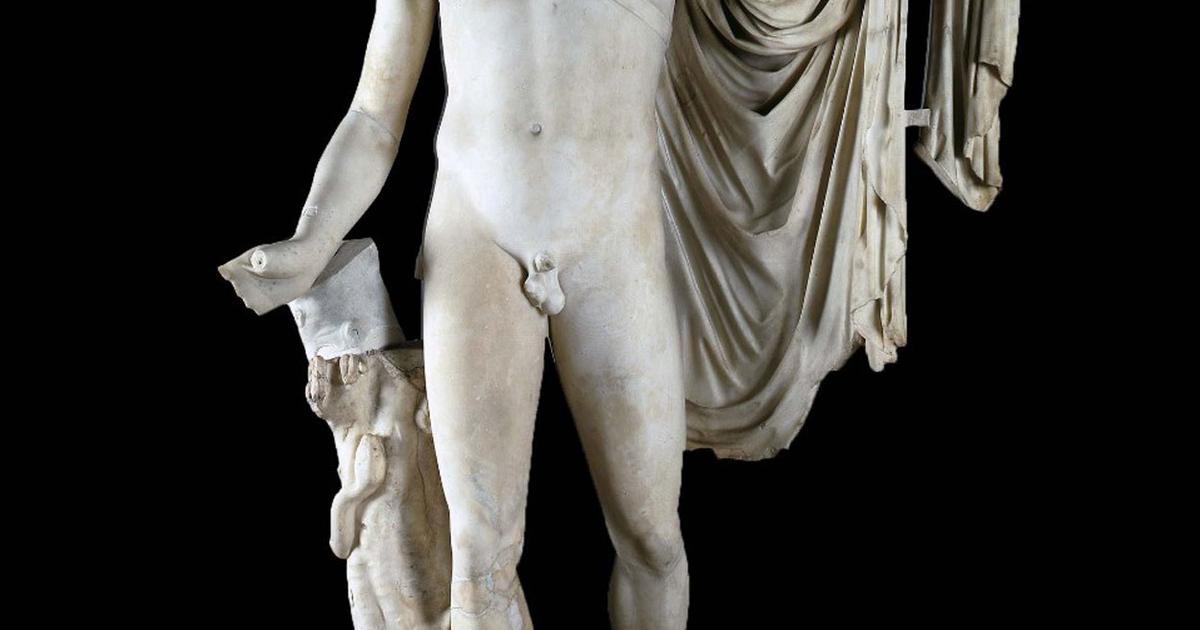In Rome, one of the most famous statues of Antiquity is being restored. A little larger than life, the Apollo of Belvedere is a fragile marble. Its last restoration dates back to the 1990s, when its internal framework was completed and repaired, carried out in the 19th century by the master neoclassical sculptor Antonio Canova.
The last intervention actually somewhat weakened one of the legs of this beautiful walking god. We must therefore resume this treatment. For this, the marble executed during the Antonine dynasty (between 96 and 192 AD) will have to be dismantled, because it is in fact a puzzle pieced together from remains.
When, during the Renaissance, probably on the site of Antium, a port located about sixty kilometers southeast of Rome, this Roman copy of a missing Greek bronze was discovered, it immediately caused a sensation.
Here rests the best memory of Leochares, a sculptor who lived in the 4th century BCE, working notably on the mausoleum of Halicarnassus. He is the legendary inventor of this type of hunting Apollo (he was originally supposed to hold a bow) and eternally young. Michelangelo, for example, was enamored of this plastic perfection, drawing inspiration from it for his monumental David, Glory of Florence, or even for his
Bacchus
. Countless worshipers followed.
A brilliant trophy
Let us cite, among the most famous, the brilliant sculptor of the Baroque age Bernini (see his
Triumphant Perseus
, same weighting, same proportions and expressive force). Or, later, Bonaparte, who confiscated the piece in 1797 from the Vatican, taking it to the Louvre in 1800 as the most brilliant of his trophies.
But let's return to the moment of discovery. A cardinal, Giuliano Della Rovere, bought the
Apollo
and placed it in the garden of his palace, Place des Saints-Apôtres. Then, when he became pope under the name Julius II (1503-1513), he moved it to Vatican Hill, to the Belvedere Palace, hence its name.
Also read: “Statues, objects of piety and hatred: the example of Greek and Roman Antiquity”
Since then, usually visible with the
Laocoon
, the
Antinous
, the
Venus Felix
or the
Tigris River
in the alcoves of the pivotal octagonal courtyard of what is now the Pio-Clementino Museum, the masterpiece, listed under the number 1015, is a global icon. All ancient history textbooks have it illustrated. As early as the 18th century, the founder of art history and modern archaeology, the German Johann Joachim Winckelmann, considered this Roman statue to be the supreme expression of Greek art,
"the highest ideal of Greek art". “art among all the ancient works that have come down to us
. ”
Constantly disseminated, formerly thanks to casts, marble replicas or bronze prints as well as via engravings, today star of tourists' selfies, this representation of the god of arts and beauty will royally resume, after a few months of restoration, his path to the summit of human genius.

